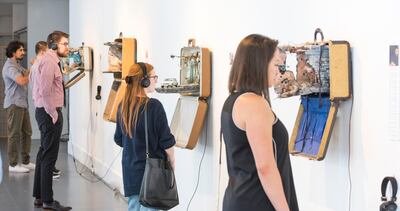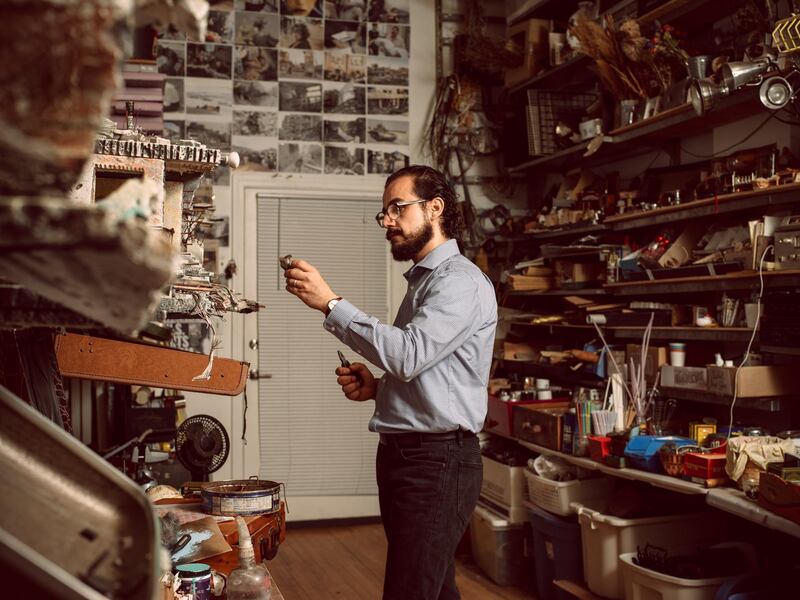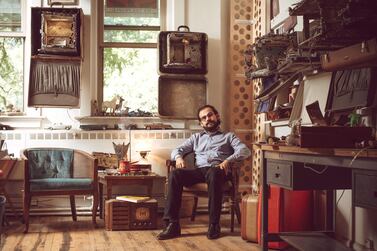Syrian artist Mohamad Hafez is the subject of a new short documentary presented by The New Yorker.
Directed by Jimmy Goldblum, A Broken House gives audiences a glimpse into Hafez’s life and his artistic practice, which is centred on recreating Damascene architecture through models pieced together by various objects and scrap materials.
The 20-minute film opens with the artist in his studio, detailing his collection of materials, from shells and nails to stones and miniature toys, all with the potential of being repurposed towards his artworks.
“This knob here is a radio switch, but what I see in it is an exploded engine,” he says.
A cross between collage and sculpture, Hafez’s assemblages were the result of homesickness when he was a young architecture student in the US around 2003. His single-entry student visa prevented him from visiting his home city of Damascus, so he decided to make it with his own hands.
“I wanted to build the Damascus of my memories,” he says.
He began to exhibit his miniature models more widely in 2015, in the US, the UK and Kuwait. In 2019, Sharjah Art Museum presented Journeys from an Absent Present to a Lost Past, a solo exhibition of Hafez's work that featured his well-known series Baggage, as well as more recent creations such as Hung Memories, where the artist experimented with hanging installation.
The pieces, keenly rendered with Hafez’s architectural eye, are not just direct replicas, but materialised memories of the artist’s childhood. Some of the dioramas burst out of suitcases symbolising displacement or are arranged in front of ornate mirrors.
In some works, lines of poetry are scribbled on the walls and metaphors, such as hidden keys, embedded in the structures. Other times, the dioramas are lamentations over the Syrian civil war, showing shelled buildings and houses in ruin.
In A Broken House, Hafez also reflects on the psychological toll of the Syrian war on his personal health and art, revealing that he was unable to eat for periods of time and persisting at work despite being consumed by news from his country.
“I had a monitor on those channels 10 hours a day,” he says. He also stopped producing artworks for two to three years.
Goldblum’s film also depicts scenes from the artist’s personal life, including his family relationships. In one particular instance, Hafez, while visiting his mother, asks her to move to America, but she insists on returning to her home country. “What do you have in Syria?,” he tearfully asks her several times.

Available to view on The New Yorker’s YouTube channel, the film is part of the magazine’s documentary video series. Its producers include Dick Gephardt, a former US congressman who, according to The New Yorker, “wanted to support projects featuring immigrants".
Currently, Hafez works at an architecture firm in New Haven, Connecticut, and exhibits his models in the US.







